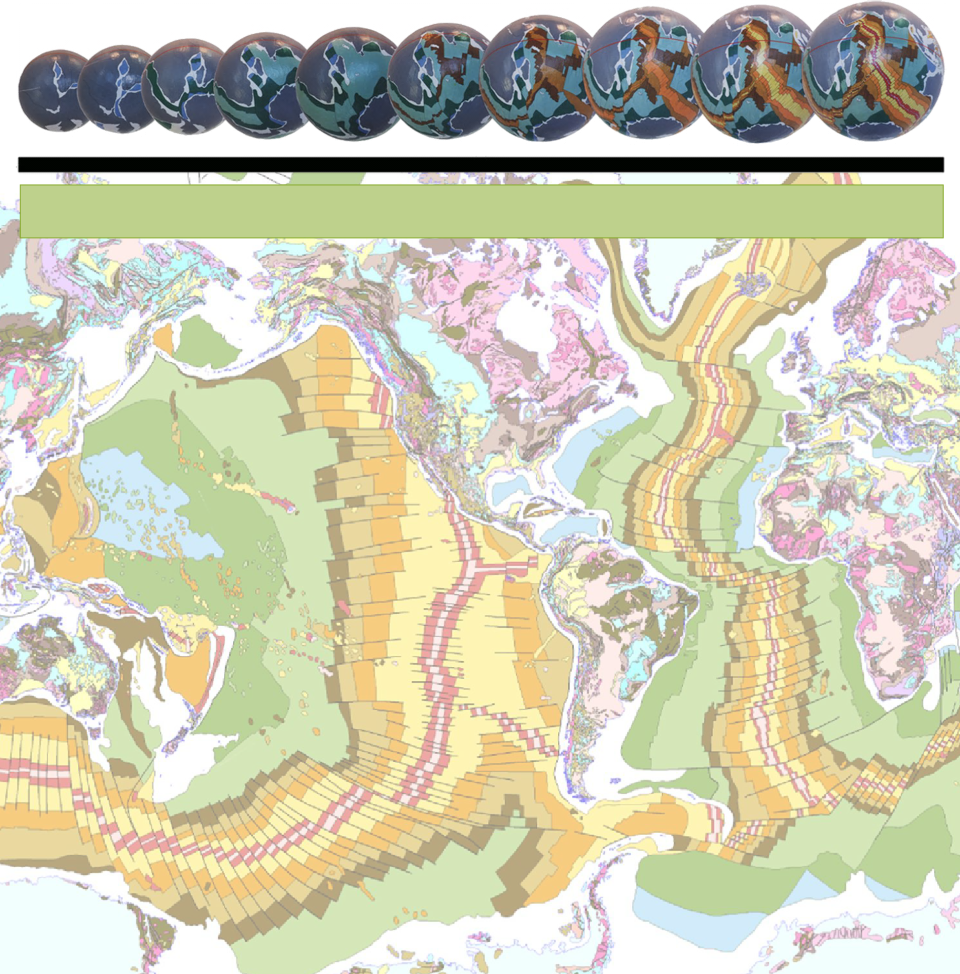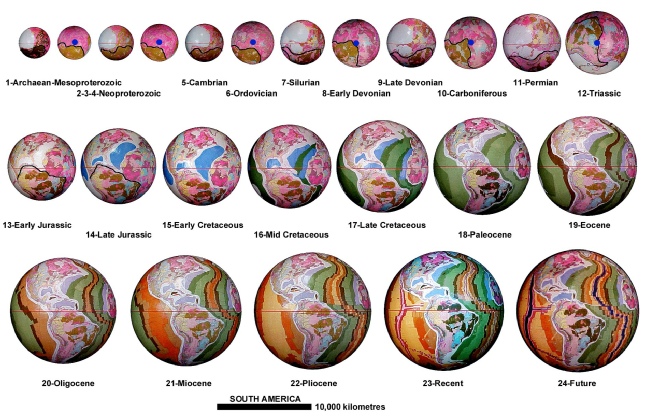

SOUTH AMERICA
The development of the South American continent is closely associated with the development of Africa and the South America to Africa assemblage has long been recognised in plate tectonic reconstructions. The closing of the Atlantic Ocean and assemblage of the American and African plates forms the basis of the Gondwana supercontinental assemblage, as well as the basis for both continental drift and plate tectonic theory.

The continental crustal development of South America on an Expansion Tectonic Earth. The horizontal red line represents the location of the ancient equator, blue dots represent the South Pole, and black lines represent the South American continental outline.
On an Expansion Tectonic Earth the South American crusts originally formed part of the primordial Archaean supercontinent, which in turn formed part of an extensive network of ancient Precambrian sedimentary basins. East Antarctica and Precambrian remnants of West Antarctica and New Zealand were located to the northwest, Australia was located to the north, North America to the northeast, and Africa to the east, south, and west. Subsequent development of South America involved an extended period of crustal extension and fragmentation of the ancient crusts during the Proterozoic Eon and Palaeozoic Era. This development occurred in conjunction with similar events in South and West Africa and was also associated with events in ancient Australia and New Zealand.
During Precambrian and Palaeozoic times, the ancient South American continent extended from low equatorial to high south polar latitudes. During the late-
Continental break-
Mountains developed during the Mesozoic and Cenozoic Eras as long linear belts along the West Coast of South America. This occurred in conjunction with further opening of the South Pacific Ocean and formed a Southern extension of the Cordilleran event in North America. Fragments of these mountain events also occur in New Zealand and Eastern Australia.
This crustal history of South America is in strong contrast with plate tectonic assemblages, whereby opening of the South Atlantic Ocean is compensated for by subduction of the South Pacific plate beneath the west coast of South America to form the Andean Mountain belt.
Closing of the Pacific plates by subduction against the Americas is not required on an Expansion Tectonic Earth. Instead, reconstruction of each of the oceans is shown to adhere with the seafloor crustal evidence preserved on the seafloors.